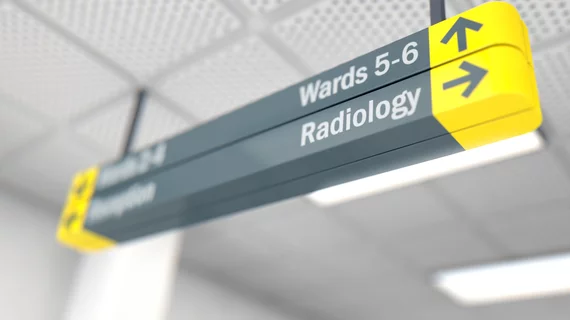4 challenges to recruiting the next generation of radiologists
Medical student applications for radiology residency programs has remained stable, but authors of a new editorial published in Academic Radiology believe the specialty will face upcoming challenges that warrant improved recruitment strategies.
Below are 4 radiology recruitment challenges and tips for overcoming them:
1. Radiology must be more visible as a career option
Many medical students are not aware that radiologists perform procedures, and most begin eliminating career choices early on in their education. This, the authors argued, is why radiology must be more visible earlier on in medical school.
“It is crucial to ensure that radiology is visible as a career option from the students’ earliest days, while minds and eyes are still open,” wrote Kara Gaetke-Udager, MD, University of Michigan-Michigan Medicine in Ann Arbor, and colleagues.
Improving radiology’s online presence is one step that can educate more students. Websites such as TeamRads.com offer interactive radiology cases to match daily lectures and hold an annually updated guide to the Radiology Match.
At the same time, physical radiologists must spend more time engaging with students to help eliminate the “lonely radiologist working in a dark, silent room” notion many students have.
“Radiologists need to be seen and heard as essential educators and professional leaders, enthusiastically pursuing a relevant and fulfilling career path, and delighted to take the next generation along for the ride,” the authors added.
2. Recruit more underrepresented minorities
Aside from previously mentioned tactics, underrepresented minorities need to know the many ways radiologists contribute to patients care through diagnosis and therapy. In fact, the authors noted, studies have shown that these students consider patient contact among the most important criteria when choosing a medical career.
“Diagnostic and IRs should embrace involvement in pathologies such as peripheral arterial disease, stroke, dialysis access, and uterine fibroids as opportunities to educate trainees and patients about existing health disparities, and engage individuals from these marginalized communities,” Gaetke-Udager et al. wrote.
Regional and national meetings are good tools to engage medical students, but equitable scholarships can help more minority students attend these meetings. Radiology societies should also think about sponsoring local faculty and trainees to attend meetings held by the Latino Medical Students Association, Association of American Indian Physicians and the Asian Pacific American Medical Student Association.
3. Focus recruitment efforts on interventional radiology
Surgery and IR are often competing to recruit students, but many are exposed to surgery during core clinical rotations. These young learners must know about IR early on to make an informed career decision.
Many IR programs have created medical student symposia which include lectures from faculty, panel discussions and hands-on demonstrations of IR techniques. This lets students experience the “breadth of interventions with flow-models, simulators, and numerous interventional devices.”
“Providing research opportunities, supporting IR interest groups, and inviting medical students to shadow IRs and attend IR symposia are some of the more effective ways of interesting students in the field,” the researchers wrote.
4. Develop more female leaders
There is a greater disparity in the number of women and underrepresented minorities in radiology leadership positions than most other medical specialties. Without leaders serving as role models, it makes it difficult to recruit the next generation of radiologists, the authors noted.
Residency programs should consider more women program directors, while structured mentoring programs could pair women and minority mentors with similar mentees to potentially boost trainee satisfaction and recruit more women and minorities.
Establishing groups to help identify issues of diversity, equity and inclusion in radiology departments might be beneficial, the authors wrote. These groups could offer feedback on residency selection and organize symposia that promote discussion among department members.
“Hopefully, these efforts at mentoring, skill development, recruiting, and raising awareness will increase the diversity of radiology leadership, both at the local and national levels,” the authors concluded. “The task is monumental, but if the profession makes it a priority, it can be accomplished with engagement and perseverance.”

